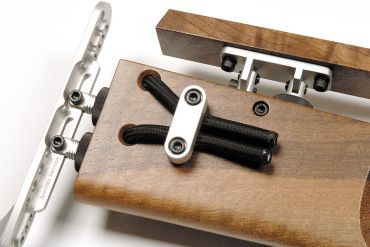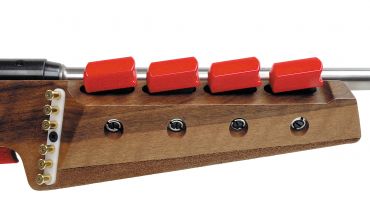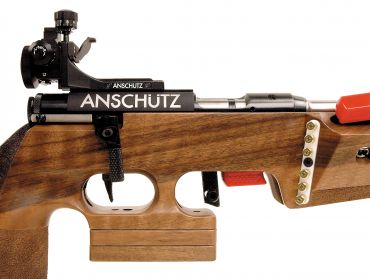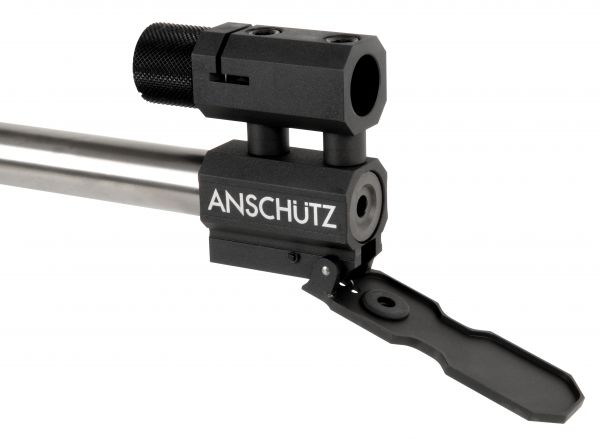The biathlon is one of the most unique sports in the Winter Olympics. Like trap shooting in the Summer Olympics, the biathlon is the perfect winter sport for firearm enthusiasts. Participants compete as either individuals or in relay teams to complete a combination of cross-country skiing and marksmanship events. The competitors are equipped with a .22 caliber biathlon rifle, which they must use in prone and standing positions over two to four shooting rounds. Racks of 1.5″ (prone) and 4.5″ (standing) targets are placed at 50 m from the line of shooters. Missed shots act as a penalty adding distance or time to the contestant’s race.
The biathlon rifle itself is unlike other weapons of the same caliber. Let’s take a closer look at what makes this rifle so unique.
Biathlon Rifle

64 Biathlon Sprint by Anschütz (image source; Anschütz)
At first glance, it’s clear this isn’t an ordinary plinkster. From the stock and sights to the action and trigger, nothing is designed by chance.
Ergonomic Stock
The unique ergonomic stock of the biathlon rifle is designed to function well in both the prone and standing positions. The cheek rise, butt plate, and fore-end of most stocks can be manually adjusted to better fit the shooter’s body.

Adjustable ergonomic stock (image source; Anschütz)
Five-round magazines of a biathlon rifle feature a non-slip bottom for improved handling. Many stocks include an ergonomic magazine holder for faster reloads.

Magazine carrier built into the stock (image source; Anschütz)
The biathlon is first and foremost a race. Therefore, the aerodynamic stock is designed to reduce drag while strapped to the racer’s back. A pair of bungee-cords are often used as a sling to offer faster transitions between shooting and racing.
Two Stage Trigger

Two stage trigger and magazine release (image source; Anschütz)
Most biathlon rifles feature a two stage trigger adjusted to about 19 ounces (550 g). The first stage is long and relatively soft, while the second stage is short and hard. The total force required to release the firing mechanism remains the same as a single stage trigger, but the pressure required to finish the squeeze is much lower. This dramatically reduces the sympathetic muscle contractions that could reduce the accuracy of the shot.
Sights and Barrel

Front sight with snow cover (image source; Anschütz)
A biathlon rifle’s sights are protected by hinged snow covers which can quickly be opened or closed. These covers are essential to protect the sights from snow deposits that can build up during races through heavy snowfall.
Biathlon Rifle For Sale
Biathlon rifles are handcrafted for some of the most elite competitors on the planet. They often cost between $3,000 and $5,000. Izhmash, now owned by the Kalashnikov Group, and Anschütz are two of the most famous manufacturers of biathlon rifles.
Each of these rifles can be custom fit to specific shooters with exchangeable parts that can be modified as necessary.